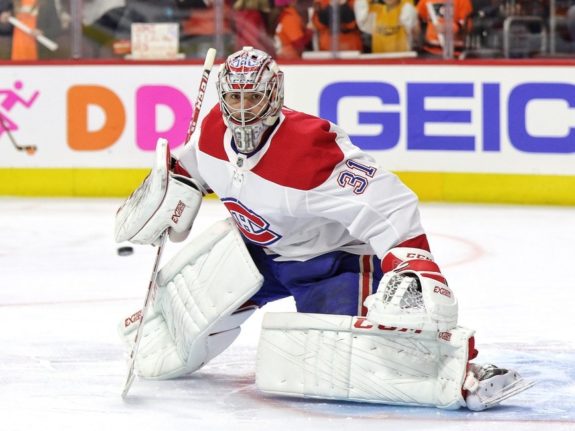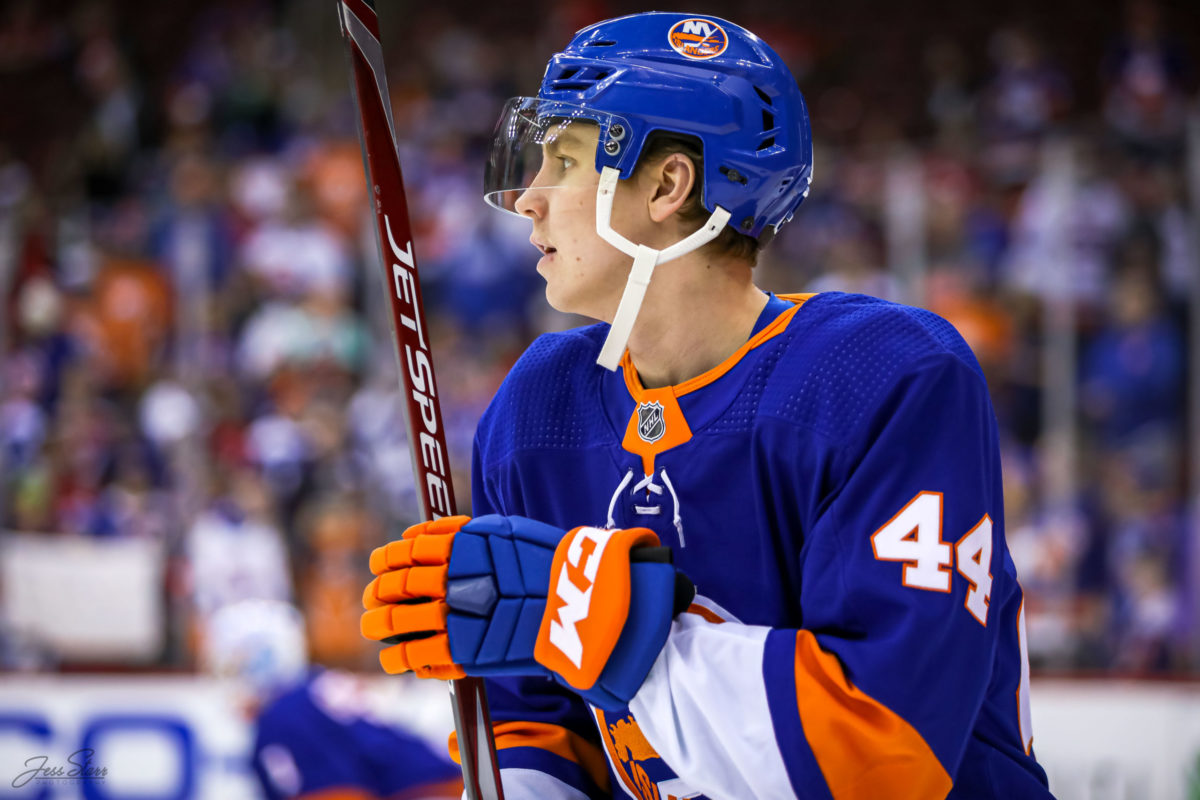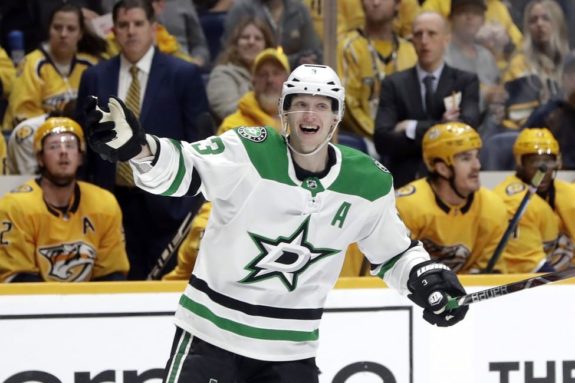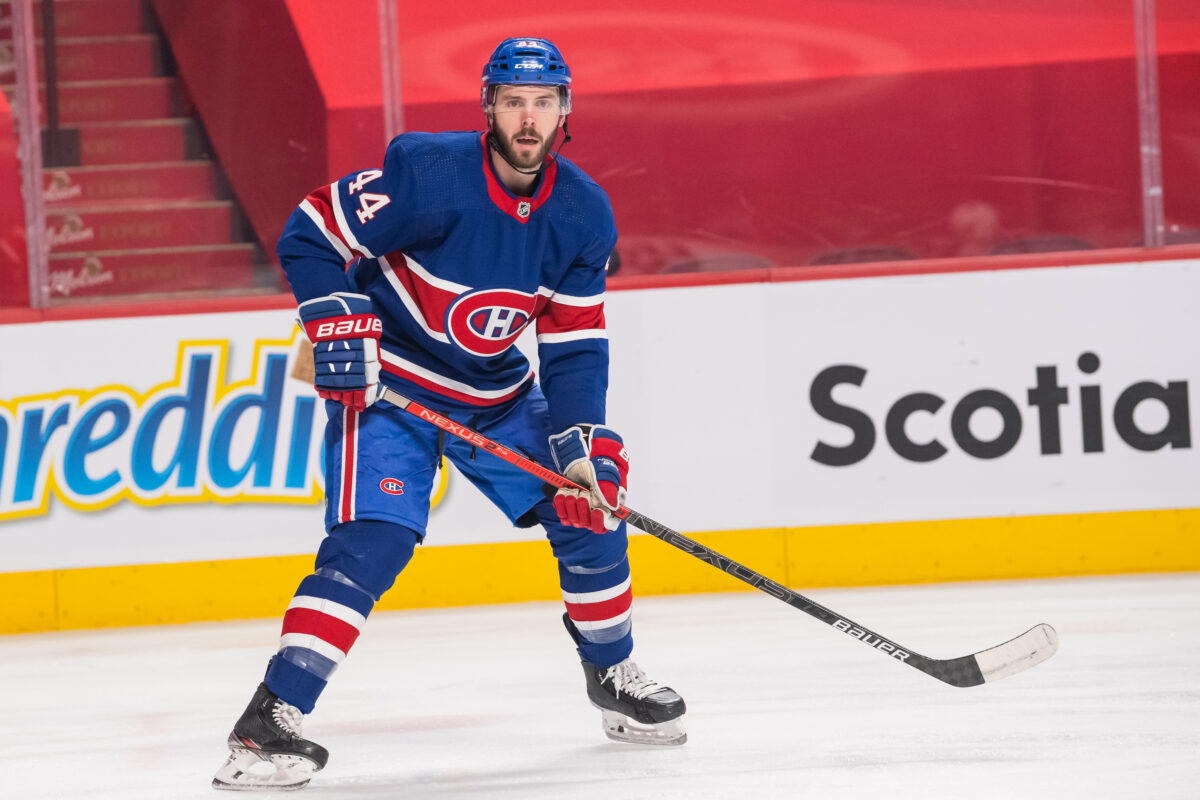The Montreal Canadiens have limped into the 2021-22 season with a lingering Stanley Cup hangover. They have failed to win in their first four games, including embarrassing losses to the Buffalo Sabres, 5-1, and 5-0 to the San Jose Sharks – two teams that missed the playoffs last season and are not expected to qualify this year.
There has been a lot of talk about the loss of the team’s identity. That could partly be due to the loss of leadership, leaving a vacuum for returning players to try and fill. Until they step up, there will be issues, and their identity will remain elusive. That sentiment was echoed by general manager (GM) Marc Bergevin in his press conference on Oct. 20.
“Yes, we miss those players, but we’ve got to find a way,”
– Canadiens GM Marc Bergevin
The Canadiens’ True Identity
Since Bergevin began his retool plan, the Canadiens have been built around strong goaltending, playing as a five-man unit, and using their speed in transition. It was an identity that enabled them to play a reliable and efficient defensive game that kept most shots outside the high danger areas in front of the net and allowed Carey Price to have more success – as shots were easier to see from further out.

The system was meant to recover rebounds or dump-ins then choose between two simple plays: chip it out of the defensive zone to relieve any pressure and regroup or have the defence make a short pass to a forward who had collapsed deep into the zone to begin a transition play.
Related: Montreal Canadiens Facing an Identity Crisis
The team could then move up ice as a unit, allowing a defender to join the rush and then create small area power plays where the opposition was unable to defend against the extra attacker. This offence-by-committee approach allowed the Canadiens to generate a high volume of shots, which was by design as the Habs lacked an elite scoring talent and enabled them to produce offence thanks to work ethic and tenacity.
This season, that identity has been non-existent, and much of it is due to a lack of mobility on the blue line.
It has led to a plethora of negative effects, not just at five-on-five but also on the penalty kill (PK), which is at 58.8%, ranked 29th in the NHL, and power play (PP) which is tied for 32nd at 0%. Their struggles have led to an angry fanbase with little sympathy from management.
“They’ve got to fight through it. Winners find solutions, losers make excuses. You’ve got to find a way.”
-Canadiens GM Marc Bergevin (Oct. 20 press conference)
The question is, are there any legitimate options for Bergevin to consider that would allow the Canadiens to rediscover their identity.
External Options
Sebastian Aho
One name that has been mentioned is Sebastian Aho. No, not Carolina Hurricanes center Sebastian Aho, but the New York Islanders defenceman playing for the American Hockey League (AHL) Bridgeport Islanders. Although, if it happens, Montreal’s social media team could use it to play a game similar to what the Hurricanes are known for and cause a little panic for a few minutes.

A few laughs at the Hurricanes’ expense would likely be the only impact this move would make. While Aho has put up solid offensive numbers in the AHL, has excellent mobility and is a good puck-mover, he has yet to crack the New York lineup. While the Canadiens need more mobility on the blue line, Aho is unlikely to rise above Sami Niku on the Canadiens’ depth chart, so this move is unlikely.
John Klingberg
There has been some discussion on social media for the Canadiens to acquire Dallas Stars defenceman John Klingberg. The right-handed puck-mover is entering the last season of a seven-year deal worth an average of $4.25 million. In that time, he put up good offensive numbers, hitting a career-high of 67 points in 2017-18. He could be relied on to play heavy minutes in a top-four role in Montreal, as his career average is just over 23 minutes per game. There is little doubt that his offensive abilities would help on the power play and especially the transition game.

However, according to Jeff Marek and Elliotte Friedman on their 32 Thoughts podcast, Klingberg is looking for a long-term contract that will pay him around $63 million, and Dallas may not be able to retain his services. There is risk involved in signing a 29-year-old defenceman who has only played a full season once, and the gamble is too risky for a GM who is in the last year of his contract, and there are questions as to if he will remain in the role.
Internal Options
It is far more likely the Canadiens look within to try and solve their issues this season.
“There are some pretty good players who are not playing up to their potential, and until they do, there’s nothing I’m going to do to make a change just to make a change.”
– Canadiens GM Marc Bergevin (Oct. 20 press conference)
One option is Sami Niku. He arrived in Montreal after being bought out by the Winnipeg Jets, giving him a second chance at an NHL job. Despite his offensive abilities that were on display in lower levels, he has yet to produce similar numbers in the NHL. The likelihood that he will have a significant impact on the Habs is low.
The return of Joel Edmundson would make a huge impact. He is out of the lineup indefinitely due to family-related issues, which Bergevin announced has to do with his father’s illness. Edmundson’s absence is further proof that the Canadiens care for their players’ well-being and should allow Edmundson to return to the lineup fully committed and focused on his job instead of having his mind focused elsewhere, which could cause mistakes, or worse, an injury.

Last season, his pairing with Jeff Petry was used the most by the Canadiens. They provided a strong two-way game with an expected-goals for (XGF%) of 53.7 percent and a low-expected goals-against (xGA%) of 22.5 percent. This pairing would instantly improve the defence. It would also push Brett Kulak down to a more suitable role and allow head coach Dominique Ducharme to put Alexander Romanov on a more stable pairing with David Savard on a long-term basis, which the sophomore defender needs.
While this may not turn the Canadiens into Stanley Cup contenders, it would reestablish them as a team capable of competing for a playoff berth. That alone would be a massive improvement on a team that’s in the NHL’s cellar.
Bergevin is in a “lame duck” year – his final season under contract with no known plan to remain with the organization. It seems likely he will keep his roster as it is all season, which includes most of the core group that made the Stanley Cup Final last season. Expect him to let the season play out and accept whatever outcome that may provide. Fans will want a playoff berth, but if he leaves in the same year that Montreal hosts the NHL Entry Draft, Bergevin may be content to leave his successor a team with significant playoff experience and a lottery draft pick that could turn them into a Cup contender.